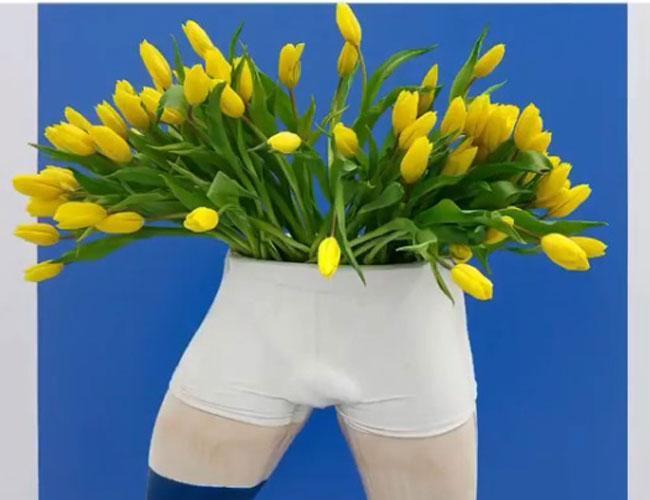
It would be impossible to speak about Soufiane Ababri’s works without thinking about queer culture, violence, manhood, Orientalist narrative and art history. The young artist, also known as the new David Hockney, is discovering the details of painting again and again. His current exhibition at The Pill gallery invites the audience to a new understanding of the male world surrounded by orientalist speech. Ababri’s works, which are called “bed works,” are a result of his vast research through art history and the male world.
The artist works with ideas such as xenophobia, post-colonial studies, and minorities. Suela Jane Cennet, the owner of the gallery, said this particular exhibition is about orientalism and its effects on post-colonial studies that the artist would always want to point out to. “He told me there would not be a better place to point out studies of Orientalism. Above all, he is so concerned about how this matter reflects onto culture and exoticism.” Cultural aspects, exoticism (from the Orientalist point of view) and its effects are important for Ababri. That’s why here in Turkey he wanted to approach this subject through sports. And he started to draw oil wrestling. In a way, oil wrestling includes everything Ababri wants to talk about: Exoticism, orientalism, violence, and manhood.
Meanwhile, he tells an Orientalist story through his paintings and criticizes Orientalist representation. Ababri managed to make these paintings special and a part of his life, drawing each painting in his bed. That’s why at the same time we call it “bed works,” said Suela Cennet. In his essay, Cüneyt Çakırlar wrote, “[Ababri] creating his works and calling them, as ‘bed works’ is an ideological and metaphoric stance for the artist.” This metaphor is also a part of orientalist representation. While for many years orientalist discourse pointed men of the Orient as fanatics and villains (as Edward Said said in his interview), Ababri wants to show as there is no reason behind this discourse.
The usage of blue color in the gallery (the floor and walls are painted in blue) and the writings on the wall refer to the representation of Orientalism. Ababri wrote song lyrics from Aladdin on the walls, which continue as: “Oh I come from a land, from a faraway place, where the caravan camels, where they cut off your ear, If they don’t like your face, It’s barbaric, but hey, it’s home.” The lyrics that caused huge controversy for Disney are nothing but an Orientalist representation, said Edward Said (1998). That’s another debate about how exoticism discourse in the Middle East becomes an orientalist speech. Ababri, gathering all these aspects in one gallery space, succeeds in reflecting onto the problematic image of orientalist speech.
Violence and pink cheeks
No matter what, we are all destined to see the violence in men’s world in Ababri’s works. However, the nature of these paintings, blue men bodies and pink cheeks, also tells us another story. There is also this sacred and vulnerable world around us. The pink cheeks of Ababri’s painted men tell us that not everything is surrounded by violence and there is another world. However, it is impossible to escape how orientalist representations direct us, and it is only possible by raising awareness in this modern world. Ababri, thankfully, opens this door for us. His paintings tell us something about our place in the contemporary world.
“The main thing I want to do is scrutinize violence, and while doing this, I use certain facts. Facts, such as these facts are coming from photographs and things I have seen. I use these. Sometimes my brain creates collages,” said Ababri, noting that he adds facts and analyzes them. “I do not try to force people to see a certain thing. The viewer will see what they want to see.”